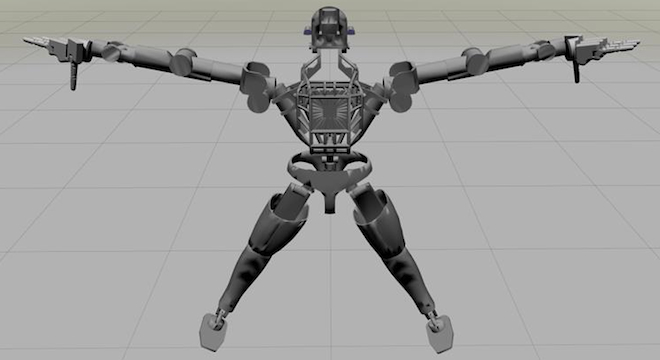The Department of Defense’s Advanced Research Projects Agency (DARPA) is moving ahead at full steam in its quest to develop, or spur the development of, humanoid robots that it can use for its own purposes — in this case, disaster response in areas too dangerous for humans but in need of a human touch (DARPA cites the Fukushima nuclear reactor meltdown as one example).
On Thursday, DARPA announced it would begin immediately accepting admissions from the general public for the latest phase in its funding competition to build such robots, the DARPA Robotics Challenge (DRC), a contest that actually started back in April but was at that time restricted to entries by teams capable of building actual hardware robots.
Now DARPA is opening the door to anyone, accepting admissions through February 2013 of “virtual robots” created using a free open source software program, the DRC Simulator, that DARPA has made available for download on its DRC website.
“One of DARPA’s goals for the Challenge is to catalyze robotics development across all fields so that we as a community end up with more capable, more affordable robots that are easier to operate,” said Gill Pratt, the program manager for the competition, in a statement posted on DARPA’s news website on Thursday. “The value of a cloud-based simulator is that it gives talent from any location a common space to train, design, test and collaborate on ideas without the need for expensive hardware and prototyping. That opens the door to innovation.”
DARPA on Thursday also launched another tier of the competition for teams to develop both robot hardware and software under their own resources, and is accepting submissions until the end of the month.
In all, DARPA is running four different phases of the competition, the first two of which, Tracks A and B, the agency has already concluded, with DARPA agreeing to sponsor a total of 18 different teams (seven teams in Track A and 11 teams in Track B) fielded by companies and research institutions around the country.
No surprise, Carnegie Mellon University in Pittsburgh, Pennsylvania — an institution renowned for its pioneering robotics research, among other hi-tech advances — was behind three of the teams chosen to receive funding in the first two rounds.
Carnegie Mellon’s “Tartan Rescue Team,” which was led by Tony Stentz, director of the National Robotics Engineering Center, netted $3 million from DARPA in Track A and could receive up to an addition $1 million. The team is working on a robot called CHIMP (CMU Highly Intelligent Mobile Platform).
Meanwhile, Carnegie Mellon’s “Team Steel” project, presided over by Christopher Atkeson from the Robotics Institute and Human-Computer Interaction Institute, netted $375,000 in Track B. A company spun out of the institute back in 2011, RE Squared, also qualified for the $375,000 funding award in Track B.
Here’s a video of one of Atkeson’s previous robots, the Sarcoman, showing off its juggling skills:
Other awards given in Tracks A and B went to Drexel University, Raytheon, SCHAFT Inc., Virginia Tech, NASA’s Johnson Space Center, NASA’s Jet Propulsion Laboratory, Lockheed Martin, the University of Kansas, the Massachusetts Institute of Technology, TRAC Labs, the University of Washington, Florida Institute for Human and Machine Cognition, Ben-Gurion University, and TORC Robotics.
Check out some images of the Track A finalists posted by DARPA on its Facebook page on Thursday.
The final grand prize of the competition is worth $2 million and will be awarded following the final challenge event in December 2014. But before that, contestants will have to duke it out in a June 2013 “virtual challenge event” in which they’ll get to write the software to control a full-size humanoid robot supplied specifically for the challenge, the aptly named Government-Furnished Equipment (GFE) robot, developed by robotics firm Boston Dynamics.
Here’s an image of that GFE robot via DARPA’s Facebook page:

Here’s a video of a prototype of that robot navigating obstacles, also from Boston Dynamics:






